Ever wondered what to do with that leftover sourdough sitting in your fridge? Instead of tossing it, why not turn it into soft, fluffy rolls perfect for any meal? These easy sourdough discard rolls are a great way to reduce waste and a simple and rewarding baking project. Whether you’re a seasoned baker or just starting your sourdough journey, this recipe will have you whipping up homemade bread rolls without fuss. So, grab your sourdough and discard it. Let’s make something delicious together!
Table of Contents
Key Benefits of Sourdough Discard Rolls
Sourdough discard rolls aren’t just delicious—they’re a clever way to make the most of your kitchen resources. Here’s why you’ll love this recipe:
- Reduce Waste: Instead of tossing sourdough, discard it and repurpose it into fluffy, flavorful rolls. It’s a sustainable and satisfying solution for leftovers.
- Quick and Easy: Unlike traditional sourdough recipes, this one skips the long fermentation process, making it perfect for busy days.
- Homemade Goodness: There’s something gratifying about baking your bread rolls. They’re soft, golden, and better than store-bought versions.
- Versatility: These rolls are great as a side dish, a base for sliders, or even a breakfast treat with a touch of butter and jam.
- Cost-Effective: By using pantry staples like flour, yeast, and your discard, you’ll create a delicious treat without breaking the bank.
With this recipe, you’ll enjoy baking and discover how a simple ingredient like sourdough discard can elevate your kitchen skills. Ready to roll? Let’s get started!
Ingredients for Sourdough Discard Rolls
These sourdough discard rolls are a fantastic way to transform simple ingredients into something special. Let’s look at what you’ll need and how each ingredient contributes to the magic of homemade bread baking.
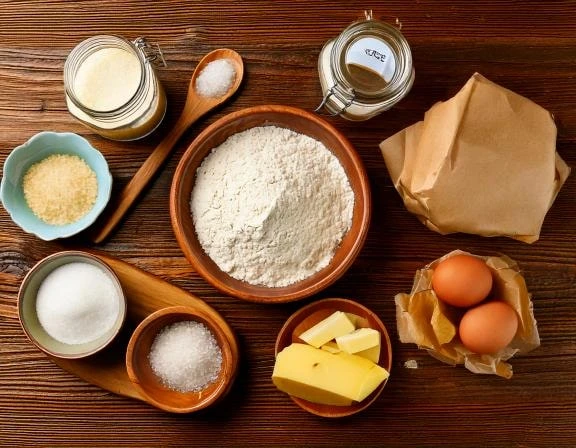
What You’ll Need and Why:
- 1 cup sourdough discard (room temperature)
- The star of the show! Sourdough discard adds a unique tangy flavor that sets these rolls apart from traditional bread recipes. It’s an excellent way to minimize waste while giving your rolls an artisan touch. Ensure your discard is fresh and free from off-putting smells for the best results.
- 2 ½ cups all-purpose flour (plus extra for dusting)
- The foundation of the dough is this flour, which gives the rolls their signature light and fluffy texture. For a twist, you can replace part with whole wheat flour for a nuttier flavor or bread flour for chewier rolls.
- 2 teaspoons active dry yeast
- This ingredient gives the dough its rise, creating airy and soft rolls. If you’re short on time, instant yeast works just as well and doesn’t require proofing.
- ¼ cup warm water (approximately 110°F)
- Warm water activates the yeast, helping it bloom and ensuring your rolls rise beautifully. Be careful with the temperature—too hot, and it can kill the yeast; too cold, and the yeast won’t activate.
- 2 tablespoons sugar
- Sugar serves a dual purpose: it feeds the yeast, promoting a better rise, and adds a slight sweetness that complements the tanginess of the discard.
- 1 teaspoon salt
- Don’t underestimate salt! It’s essential for balancing flavors and strengthening the dough’s structure. Without it, your rolls may taste bland.
- 2 tablespoons softened butter (plus extra for brushing)
- Butter brings richness to the dough, making the rolls tender and moist. Brushing melted butter over the rolls before or after baking adds a glossy, golden finish and enhances flavor.
- 1 egg (optional)
- An egg can enrich the dough, making it softer and fluffier. Alternatively, you can use it to brush the tops of the rolls for a shiny, professional finish.
Ingredient Insights and Pro Tips:
- Sourdough Discard: If you’re new to sourdough, think of discard as a secret ingredient that turns leftover starter into a treasure. For an extra flavor boost, try using discard from a rye or spelled starter.
- Flour Substitutions: Mix whole grain flour for a hearty texture or bread flour for a more elastic dough. Remember that substitutions may slightly alter the hydration levels, so adjust water as needed.
- Butter Alternatives: Substitute butter with olive oil or a plant-based alternative for dairy-free rolls. This tweak doesn’t compromise flavor and keeps the texture wonderfully soft.
- Adding Flavor: Want to get creative? Mix in fresh herbs, shredded cheese, minced garlic for a savory twist, or a sprinkle of cinnamon and sugar for a sweet version.
Why These Rolls Are Worth Making:
This recipe isn’t just about baking bread—it’s about turning everyday ingredients into a comforting treat perfect for any occasion. With the right balance of tangy sourdough flavor and buttery softness, these rolls will become a household favorite. Plus, using sourdough discard is a satisfying way to reduce kitchen waste while creating something delicious.
Ready to move on? Let’s turn these simple ingredients into soft, flavorful, and irresistible rolls!
Step-by-Step Guide to Sourdough Discard Buns: A Delicious Adventure
Crafting sourdough discard buns is not just a recipe—it’s a satisfying journey through the art of baking. Follow these detailed instructions to create pillowy, golden buns that are sure to complement any feast.
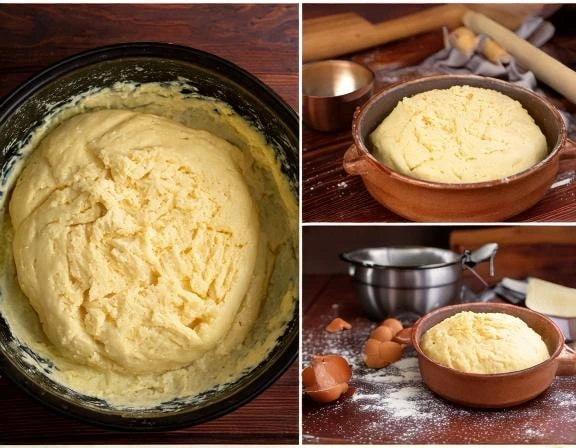
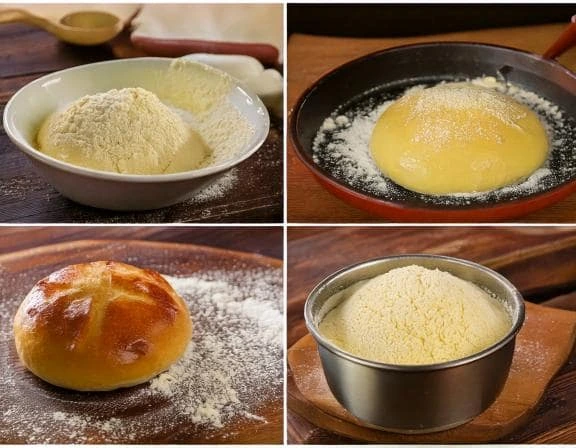
1. Revive the Yeast: The Essential Starter
In a small container, mix ¼ cup of lukewarm water (around 110°F) with 2 tablespoons of granulated sugar. Scatter 2 teaspoons of active dry yeast over the mixture and allow it to rest for 5-10 minutes until bubbles and foam emerge on the surface.
Tip: If no froth appears, the yeast might be inactive. Discard the batch and restart with fresh yeast to ensure proper fermentation.
2. Combine the Ingredients: Building the Base
In a large mixing vessel, blend 1 cup of sourdough discard, 2 tablespoons of softened butter, and 1 teaspoon of fine salt. Incorporate the yeast mixture and stir thoroughly.
Gradually fold in 2 ½ cups of all-purpose flour, a bit at a time, until a soft and sticky dough takes shape.
Tip: Use a stand mixer with a dough hook for effortless kneading, or work it manually with a robust wooden spoon.
3. Work the Dough: Develop Texture and Strength
Move the dough onto a floured countertop and knead it diligently for 8-10 minutes, transforming it into a smooth, elastic mass.
Tip: If the dough adheres to your palms, lightly sprinkle it with flour, but avoid overusing it, as too much will make the buns heavy.
4. Allow the Dough to Rise: First Proofing
Place the dough in a lightly oiled bowl, cover it with a clean kitchen cloth or plastic wrap, and let it rest in a warm, draft-free spot for 1-2 hours, or until it doubles in volume.
Tip: An oven with the light on creates a cozy environment for optimal rising.
5. Shape the Buns: Forming Perfection
Gently press the dough to release excess air. Divide it into 12 equal portions, rolling each one into a compact, smooth sphere. Arrange the balls on a greased baking tray or snugly in a round pan, leaving slight gaps between them.
Tip: For uniform sizes, weigh each portion using a kitchen scale.
6. The Second Rise: Preparing for Baking
Cover the shaped buns with a towel and let them rest for another 30-45 minutes until they swell and nearly double in size.
7. Bake the Buns: The Final Touch
Preheat your oven to 375°F (190°C). Before baking, brush the tops of the buns with melted butter or a whisked egg for a shiny, golden crust. Bake for 18-22 minutes, or until the buns turn a rich golden-brown and produce a hollow sound when tapped underneath.
8. Cool and Enjoy
Transfer the buns to a wire rack to cool briefly. Serve them warm with a pat of butter, a drizzle of honey, or alongside hearty soups and fresh salads. Every bite is an indulgence.
Pro Tips for a Baking Triumph
- Monitor the Proofing: Watch both rises carefully; overproofed dough can lead to deflated buns.
- Add a Personal Touch: Sprinkle shredded cheese, sesame seeds, or fresh herbs on top before baking for an extra layer of flavor.
- Freezer-Friendly Option: These buns freeze exceptionally well. Wrap each one individually and reheat in the oven when needed for a fresh taste.
- Make-Ahead Convenience: Prepare the dough in advance and refrigerate it after the first rise. Shape and bake fresh buns the next day for hassle-free mornings.
By blending precision, creativity, and patience, you’ll master the art of baking sourdough discard buns that are tender, flavorful, and a hit at any gathering. Enjoy every step of this flavorful endeavor!
Expert Tips and Creative Twists for Sourdough Discard Buns
Elevate your sourdough discard buns with these practical insights and inventive variations. Whether you’re fine-tuning the recipe to match your preferences or ensuring flawless results, these suggestions are your go-to guide for a baking triumph.
Pro Tips for Exceptional Buns
- Start Fresh: Always use fresh, unfed sourdough discard with a clean, tangy scent. It’s the secret to achieving the best flavor profile.
- Mind the Dough Texture: Aim for a slightly sticky yet manageable dough. Resist the urge to add excess flour during kneading to maintain softness and fluffiness.
- Proof Like a Pro: Place your dough in a warm, draft-free area for rising. Keep an eye on it to avoid overproofing, which can deflate the buns and compromise their structure.
- Crust Perfection: For a golden, glossy finish, brush the tops with melted butter or an egg wash before sliding them into the oven.
- Check for Completion: After baking, tap the underside of a bun—it should sound hollow. If not, return them to the oven for a couple more minutes to finish baking.
Flavorful Twists to Try
- Herbal Aromas: Mix 1-2 teaspoons of dried herbs such as rosemary, thyme, or oregano into the dough for a fragrant upgrade.
- Cheesy Bliss: Incorporate shredded cheddar, Gruyere, or Parmesan directly into the dough or sprinkle it generously on top before baking.
- Garlic-Infused Buns: After baking, brush the buns with melted garlic butter for an irresistible flavor boost.
- Cinnamon Swirls: Add 2 tablespoons of sugar and a hint of cinnamon to the dough. Sprinkle the shaped buns with cinnamon-sugar before baking for a sweet and aromatic twist.
- Seeded Elegance: Top the buns with sesame seeds, poppy seeds, or sunflower seeds before baking for added crunch and visual appeal.
Make-Ahead and Storage Ideas
- Refrigerate for Convenience: After the first rise, refrigerate the dough to slow fermentation and deepen its flavor. Shape and bake the buns fresh the following day.
- Freeze for Future Enjoyment: Fully bake the buns, allow them to cool, and store them in an airtight container or freezer-safe bag for up to 3 months. When ready, reheat in a preheated oven for 5-10 minutes to regain their freshly baked allure.
- Gentle Reheating: To warm buns without drying them out, wrap them in aluminum foil and heat at 350°F (175°C) for about 10 minutes.
With these pro strategies and flavor-enhancing ideas, your sourdough discard buns can be tailored to suit any gathering or craving. Whether you stick to the classic method or experiment with personalized variations, these buns are sure to become a beloved staple at your table!
Serving Suggestions for Sourdough Discard Rolls
Sourdough discard rolls are incredibly versatile and can elevate any meal, whether serving them fresh from the oven or repurposing leftovers. Here are some creative and practical ways to enjoy them.
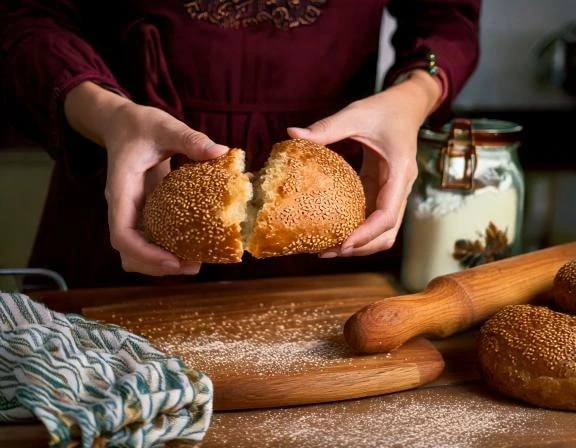
- As a Classic Side
- Pair these warm, buttery rolls with hearty soups, stews, or creamy chowders for a comforting meal.
- Serve them alongside roasted meats, grilled chicken, or holiday turkey for an impressive spread.
- Add them to a brunch table with scrambled eggs, crispy bacon, and fresh fruit for a well-rounded feast.
- As a Sandwich Base
- Sliders: The rolls are the perfect size for sliders. Fill them with pulled pork, BBQ chicken, or your favorite burger patties.
- Breakfast Sandwiches: Layer scrambled eggs, cheese, and sausage or bacon for a satisfying morning meal.
- Veggie Delight: For a fresh, flavorful option, create a vegetarian sandwich with roasted vegetables, hummus, or avocado.
- Sweet Pairings
- Spread the rolls with butter and your favorite jam, jelly, or marmalade for a sweet treat.
- Drizzle with honey or maple syrup for an indulgent breakfast or snack.
- Add a dollop of whipped cream and fresh berries for a quick dessert that feels fancy.
- Holiday and Party Uses
- Use these rolls as the base for stuffing or bread pudding during the holidays.
- For gatherings or dinner parties, serve them in a breadbasket with flavored butter, like garlic herb or cinnamon honey.
- Arrange them on a charcuterie board with cheeses, cured meats, and spreads for an elevated appetizer.
- Creative Leftover Ideas
- Breadcrumbs: Let the rolls dry out, then blend into breadcrumbs for topping casseroles or breading chicken.
- Croutons: Cut the rolls into cubes, toss with olive oil and seasonings, and bake for homemade croutons.
- French Toast: Turn slightly stale rolls into decadent French toast by soaking them in a cinnamon-vanilla egg mixture and frying until golden.
Tips for Serving:
- Serve Warm: Always reheat rolls slightly before serving to restore their fresh-baked softness. Wrap them in foil and warm them in the oven at 350°F for 10 minutes.
- Flavored Butter: To complement the rolls, offer a variety of flavored butter, such as honey cinnamon, roasted garlic, or herb butter.
- Presentation Counts: Place the rolls in a lined basket or on a rustic wooden tray for a charming and inviting display.
With these serving ideas, sourdough discard rolls can seamlessly fit into any meal or occasion. Whether you’re enjoying them fresh or giving leftovers a new life, these rolls will surely delight you every time!

Sourdough Discard Rolls
Equipment
- 1 Mixing Bowls For combining and proofing the dough.
- 1 Measuring Cups and Spoons To measure ingredients accurately.
- 1 Wooden Spoon or Dough Whisk For mixing the dough.
- 1 Stand Mixer with Dough Hook (optional): To make kneading easier.
- 1 Kitchen Scale For evenly portioning the rolls.
- 1 Rolling Pin (optional): If shaping variations require flattening dough.
- 1 Baking Sheet or Pan For baking the rolls evenly.
- 1 Parchment Paper (optional): To prevent sticking.
- 1 Clean Kitchen Towel or Plastic Wrap To cover the dough during proofing.
- 1 Pastry Brush For brushing butter or egg wash on the rolls.
- 1 Oven Thermometer (optional): To ensure the correct baking temperature.
- 1 Wire Rack: For cooling the rolls post-baking.
Ingredients
Dough Ingredients:
- 1 cup sourdough discard room temperature
- Adds tangy flavor and reduces waste.
- 2 ½ cups all-purpose flour plus extra for dusting
- Creates a soft and fluffy texture.
- 2 teaspoons active dry yeast
- Helps the dough rise.
- ¼ cup warm water about 110°F
- Activates the yeast.
- 2 tablespoons sugar
- Feeds the yeast and adds subtle sweetness.
- 1 teaspoon salt
- Balances the flavors.
- 2 tablespoons softened butter plus extra for brushing
- Adds richness and moisture.
- 1 egg optional
- Enhances texture and creates a glossy finish when brushed on top.
Optional Add-Ins:
- Herbs or Spices: Add dried rosemary thyme, or garlic powder for extra flavor.
- Cheese: Mix shredded cheese into the dough or sprinkle on top.
- Seeds: Top rolls with sesame or poppy seeds for added texture.
Instructions
Step 1: Activate the Yeast
- In a small bowl, mix ¼ cup warm water (110°F) with 2 tablespoons sugar.
- Sprinkle 2 teaspoons active dry yeast on top and let it sit for 5-10 minutes until frothy.
Step 2: Prepare the Dough
- In a large mixing bowl, combine 1 cup sourdough discard, 2 tablespoons softened butter, and 1 teaspoon salt.
- Add the yeast mixture and stir to combine.
- Gradually mix in 2 ½ cups all-purpose flour, a little at a time, until a sticky dough forms.
Step 3: Knead the Dough
- Transfer the dough to a floured surface and knead for 8-10 minutes until it’s smooth and elastic.
- Tip: Use a stand mixer with a dough hook for easier kneading.
Step 4: Let the Dough Rise
- Place the dough in a greased bowl and cover with a clean kitchen towel or plastic wrap.
- Let it rise in a warm spot for 1-2 hours, or until it doubles in size.
Step 5: Shape the Rolls
- Punch down the dough and divide it into 12 equal pieces.
- Roll each piece into a smooth ball and place them on a greased baking sheet or in a round pan.
- Cover with a towel and let rise again for 30-45 minutes.
Step 6: Bake the Rolls
- Preheat the oven to 375°F (190°C).
- Brush the tops of the rolls with melted butter or an egg wash.
- Bake for 18-22 minutes, or until golden brown and hollow-sounding when tapped.
Step 7: Cool and Serve
- Remove the rolls from the oven and cool slightly on a wire rack.
- Serve warm with butter, jam, or as a side to your favorite dish.
- These step-by-step instructions ensure perfectly soft and golden sourdough discard rolls every time!
Video
Notes
- Use fresh, unfed sourdough discard for the best flavor.
- Add flour gradually if the dough feels too sticky.
- Enhance flavor with herbs, garlic, cheese, or cinnamon sugar.
- Proof dough in a warm, draft-free spot.
- Freeze unbaked or baked rolls for future use.
- Refrigerate dough after the first rise for up to 24 hours.
- Brush rolls with butter for a soft crust or egg wash for a shiny finish.
- Repurpose leftovers into croutons, breadcrumbs, or French toast
Conclusion: Why You’ll Love Sourdough Discard Rolls
Sourdough discard rolls are more than just a delicious addition to your table—they’re a testament to the creativity and resourcefulness of home baking. With their soft, fluffy texture and rich, tangy flavor, these rolls will become a favorite in your recipe collection.
By transforming what might otherwise be wasted sourdough discard into something delightful, you’re embracing sustainability while creating a treat everyone will enjoy. From their versatility as a side dish to their potential as the meal’s centerpiece, these rolls offer endless possibilities.
Key Takeaways for Success:
- These rolls are approachable for bakers of all levels, thanks to straightforward instructions and accessible ingredients.
- They’re highly customizable—whether you prefer savory, sweet, or a mix of flavors, these rolls adapt to your creativity.
- Sourdough discard not only adds depth of flavor but also helps reduce waste, making this recipe as practical as it is tasty.
Whether you serve these rolls fresh out of the oven, customize them with your favorite flavors, or save leftovers for another use, they bring warmth and comfort to every bite. Plus, the satisfaction of baking them from scratch makes them all the more special.
So, why wait? Gather your ingredients, roll up your sleeves, and enjoy the process of making sourdough discard rolls that will impress your family and friends. Happy baking!
FAQ
How long will sourdough discard last?
Sourdough discard can remain viable for up to two weeks when stored in the refrigerator, though its tangy aroma and flavor will intensify over time. For optimal results in baking Sourdough Discard Rolls, use fresh discard within the first week. Older discard may still be used but could impact fermentation strength and overall dough performance.
How to store sourdough discard rolls?
Store sourdough discard rolls in an airtight container at room temperature for up to 2 days. For longer freshness, refrigerate for up to 5 days or freeze for up to 3 months. Reheat rolls in the oven to restore softness.
How should I store sourdough discard?
To store sourdough discard, transfer it to an airtight container and refrigerate promptly. This preserves its fermentation properties while preventing contamination. For consistent results in baking Sourdough Discard Rolls, refresh discard weekly by removing a portion and replacing it with fresh flour and water. Avoid prolonged exposure to room temperature, as it may compromise its quality.
What to know about sourdough discard?
Sourdough discard is the unused portion of sourdough starter removed during feeding. Rich in natural yeast and bacteria, it enhances flavor in recipes like Sourdough Discard Rolls. While it lacks the leavening power of an active starter, its tangy essence adds depth to baked goods. Always store discard properly to maintain its freshness and culinary potential.
Can sourdough discard be used as starter?
Sourdough discard cannot serve as an active starter immediately, as it lacks the necessary leavening strength. However, with regular feedings of flour and water, it can be revitalized into a functional starter. In the meantime, it’s ideal for recipes like Sourdough Discard Rolls, where its tangy flavor enhances the dough without relying on its rising ability.
How do you know if sourdough discard is bad?
Bad sourdough discard smells rotten or has visible mold. A sharp, tangy aroma is normal, but strong ammonia-like odors indicate spoilage. If in doubt, discard it to avoid risking your baked goods.
Is sourdough discard healthy?
Yes, sourdough discard is healthy. It contains natural probiotics and prebiotics that support digestion. While it’s not as active as fed starter, it retains many nutrients, making it a great addition to baked goods.
How do you keep sourdough rolls fresh?
To keep sourdough rolls fresh, store them in an airtight container or wrapped in foil at room temperature for 1-2 days. For longer storage, refrigerate or freeze. Reheat before serving to restore softness.
Can I freeze sourdough discard?
Yes, sourdough discard freezes well. Portion it into airtight containers or freezer bags and freeze for up to 3 months. Thaw it in the refrigerator overnight before using it in recipes
What to use instead of sourdough discard?
If you don’t have sourdough discard, substitute equal parts flour and water in recipes. Plain yogurt or buttermilk can mimic the tangy flavor in certain baked goods. Adjust liquid content accordingly.
Can sourdough discard be revived?
Yes, you can revive sourdough discard by feeding it with equal parts flour and water. Repeat feedings over 2-3 days, and it will regain activity, transforming into a functional sourdough starter.
How long can you leave sourdough out of the fridge?
Sourdough discard can sit at room temperature for up to 24 hours, depending on the climate. In warmer conditions, store it in the refrigerator sooner to prevent over-fermentation or spoilage.
How long is sourdough discard usable?
Sourdough discard is usable for 1-2 weeks if refrigerated. If frozen, it can last up to 3 months. Always inspect for signs of spoilage, like mold or foul odors, before using.
How should sourdough discard smell?
Fresh sourdough discard should smell tangy and mildly sour, like yogurt. A strong, unpleasant odor or ammonia-like smell indicates spoilage, and the discard should be thrown away.








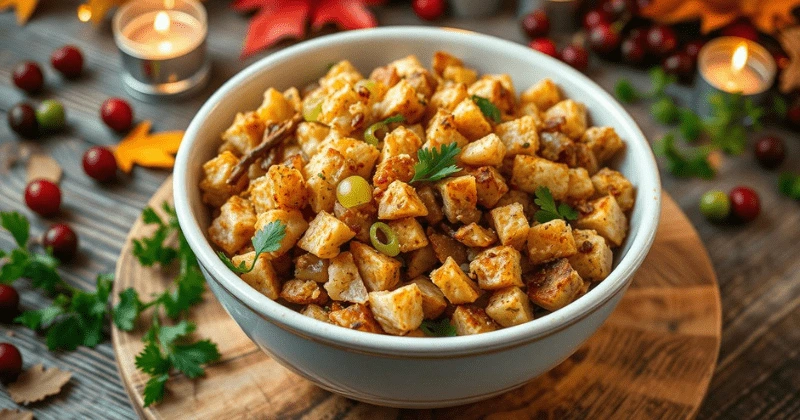


2 Responses
Ill try it for sure 😃😃
Love it.thank you